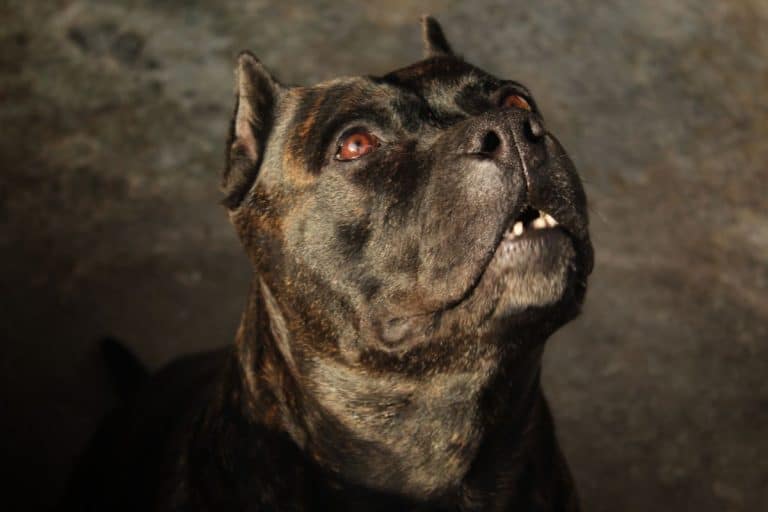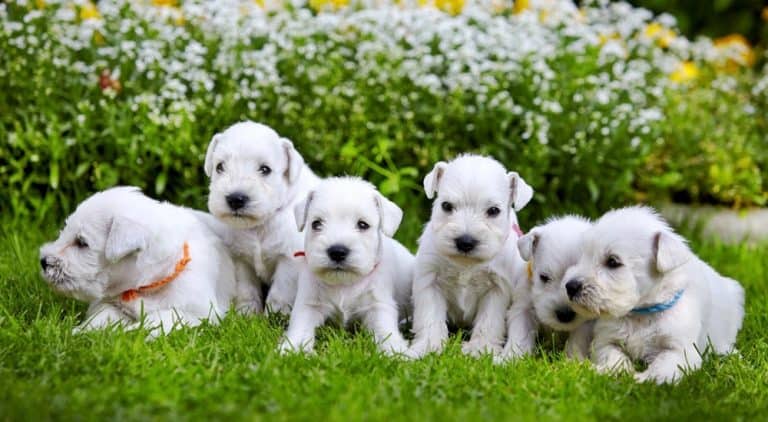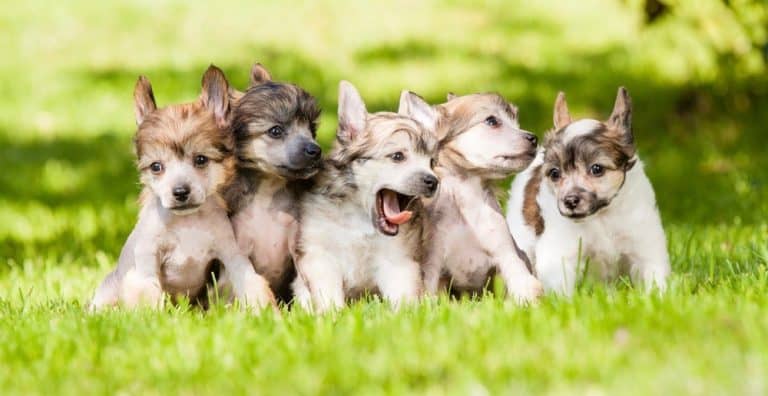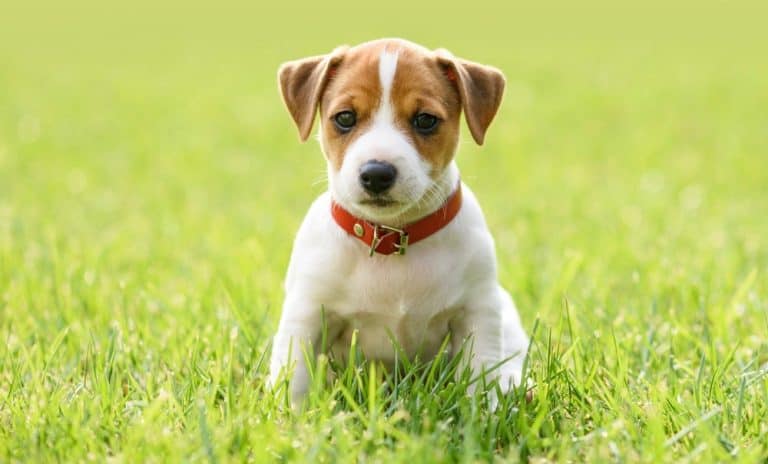Dog Tail Position Chart – What Does Dog Tail Position Mean?
Human beings have found ways to learn about canines due to many years of domestication.
Even though we don’t have the technology that would read their minds, we have gained considerable insight into their thoughts feelings, and emotions.
A dog tail position chart is one way that we can understand the feelings of canines.
If you look at your dog carefully you will notice subtle and not-so-subtle signs that communicate their feelings.
Their ears, eyes, and facial expressions can give you a glimpse into their mental states, but the position of their tails also does a good job.
A dog’s tail serves him in many ways. They use it to balance themselves properly as evidenced by sports dogs who are able to zip across terrains with the help of their tail providing agility and balance.
Dogs also use their tail to spread their scent as a way of making their presence known.
Another way that dogs use their tail is to communicate with other canines since they have deep-rooted instincts from their wolf ancestors.
This practice some of these behaviors even though they are not a part of a pack. Various tail positions can tell you how your dog is feeling at that moment.
It is not just tail position that tells the story of your dog’s feelings but tail wagging also gets the point across.
There have been new discoveries about canines published by researchers who have studied their behavior.
They found that tail-wagging does not only happen when your dog is happy and being friendly. Your dog may wag his tail end times of warning or insecurity.
The Functions Of A Dog’s Tail
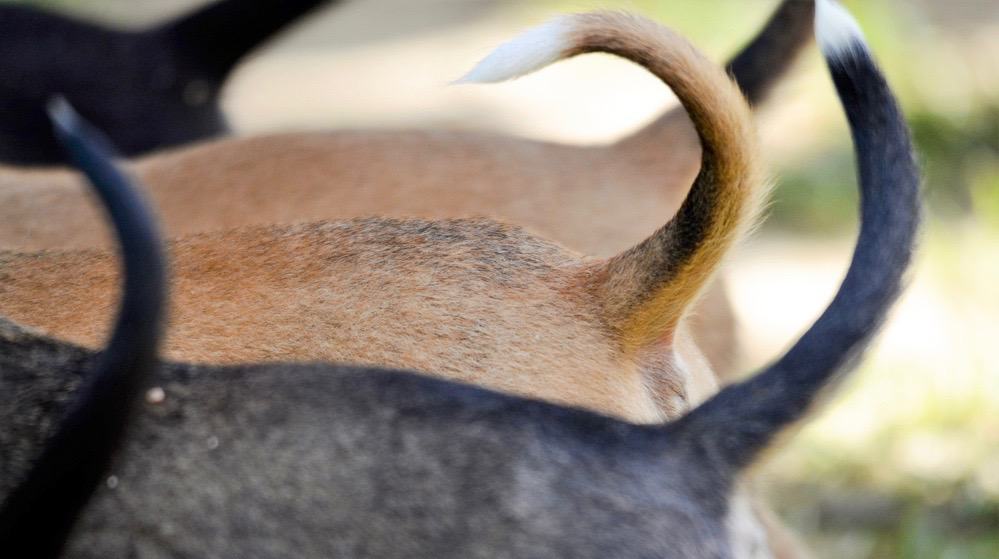
Your dog’s tail serves as a form of nonverbal communication. You can tell if your dog is happy or sad by the motion of his tail.
That said, the tail is responsible for more than just communication. On different dog breeds, you can find a variety of shapes and sizes including short, curly, long, or flat.
Understand that a dog’s tail is simply an extension of his spine. This means that injuries affecting his tail will be painful and also dangerous because of this connection.
Damage to a dog’s tail will affect the health of the entire skeletal system. Your dog’s tail bones are known as vertebrae. They have disc cushions that create a gap between them.
Control and bowel movements are facilitated in part by the muscles and nerves located within the tail.
For this reason, your vet may ask you about your dog’s bowel movements if you come to him about a problem with your dog’s tail.
Dog Tail Position Chart And The Tail Position Meaning

Carried High With Upward Tilt
If you notice that your dog has a raised tail, but it is not quite perfectly upright, it means that they have a positive feeling, and they are quite confident in their environment.
You may notice your dog taking this position when they are in the dog park.
Many dogs take on this position as a way to let other dogs know that they should not be messed with.
It does not necessarily mean that your dog is aggressive when his tail is in this position.
However, it is a way that your dog uses to declare his dominance in the group or environment he finds himself.
Curled And High Over The Back
Whenever you notice that your dog’s tail is curled slightly over his back, this means that he is feeling particularly confident in his position.
However, this is not always the case because some dog breeds are known to naturally have tails that are curly sickle. This means that they can’t help the way that their tail tilts in the direction of their back.
You can expect that your dog is feeling really confident when their tail is curled in the direction of their back only when their tail is not naturally curly.
If your dog has a straight tail that is suddenly in a curly position, then he is feeling confident and in control.
Fast Wagging In High Position
When your dog is wagging his tail quickly in a high position you can count this as a good sign.
This is usually when your dog is excited about something happening to them or something they are about to experience.
This tail position is easily distinguishable from others because it typically appears that your dog is going a mile a minute.
In most cases, the tail wagging is typically coupled with other excited body movements like your dog hopping at the toes and shaking uncontrollably with joy.
Sometimes dogs behave this way when you get home from work or when they are involved in playful activities. Other dogs act this way when they are about to eat foods that they love.
Many owners enjoy seeing their dog excited, although it can be a bit annoying especially for larger dogs who can knock things over much more easily.
Do your best to calm your dog down before they make a mess that you both will regret by petting him.
Relaxed Wagging In High Position
A tail like that is more relaxed means something totally different. When your dog has his tail in a high position what is wagging in a relaxed way it means that your dog is happy and relaxed.
You will mostly notice this for everyday common occurrences that bring them joy.
In cases like these, your dog is relaxed and happy, but they are not overly excited like the previous tail position speak.
They may do this for a normal dinner or whenever they want to show you some love. If you are about to take them for a walk some dogs may behave this way.
Relaxed And Horizontal
If you see your dog in a position where his tail is horizontal or close to horizontal it simply means that they are paying special attention to what is happening in their environment.
In cases like this, your dog does not want to miss a moment of what is happening around them to sight and sound.

Look at your dog carefully when they are like this because it means that they are paying attention to something and things have the potential to go left at any time.
If they are focusing on a person that is new to them, you should calm them down and reassure them that the person is your visitor. Be careful that the situation does not escalate into something that can hurt your dog or others.
Stiff And Horizontal
This position occurs when your dog’s tail is slightly horizontal, but it is still and stiff. It is not relaxed like in the previous position instead it is completely motionless.
Your dog is usually meeting another dog or human for the first time, and they are being cautious. Your dog is being attentive in the situation as he watches and waits to see what the stranger will do.
Pay close attention to your dog because the situation can go either way. If the dog or stranger is a friend then you might notice your dog starts to wag his tail or become relaxed.
On the other hand, if your dog perceives them as a threat he may act aggressively.
Downward And Out
Your dog’s tail is in a lowered position and stretched away from his hind legs. Your dog takes this position most of the time whenever he is comfortable and relaxed.
As he walks around the home or yard with no particular sense of danger or excitement he will take on this pose. He may also take on this tail position when he is tired and about to take a nap.
Still In Downward Position
Your dog is uncomfortable when his tail is in a position that is close to his hind legs end facing downward. In this case, the tail is not directly touching behind his legs or tucked underneath him.
The table position indicates that your dog is mentally confused or uneasy. He could be in a new environment with new people and trying to understand what is going on.
If you notice that your dog is taking this stance you should do your best to reassure him that he is safe.
Do not make the situation worse by ignoring him or yelling at him to behave the way he usually does. It would not take much to drive your dog over the edge at this point.
You should also do your best to take him to a place where he is comfortable. Your presence should put his mind at ease a little.
In Low Position Alongside Hind Legs
This tail position makes it appear that your dog is tucking his tail beneath his legs. However, his tail is not quite there yet.
Nevertheless, this is still a submissive position and signifies that your dog is accepting of the social hierarchy of not being the dog in charge.
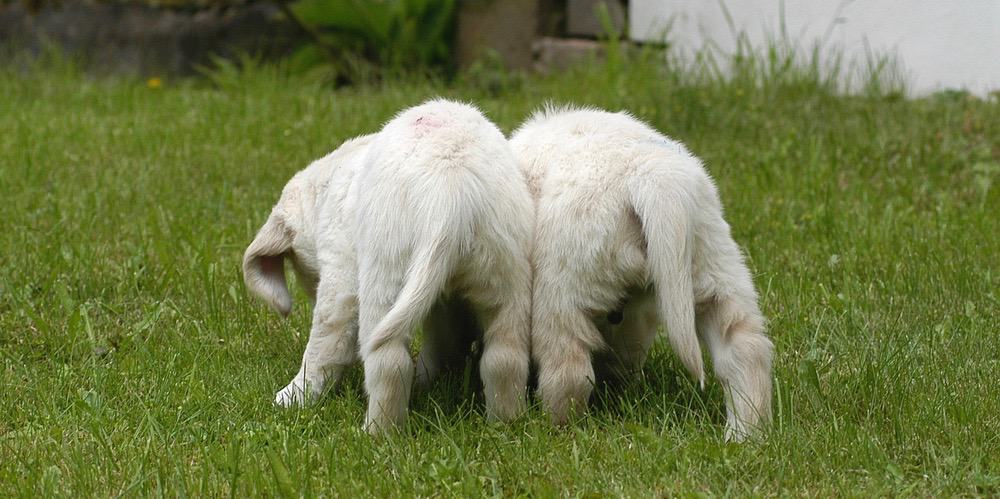
You may notice this stance when your dog is at the dog park and there are other humans and dogs present there.
Your dog is usually attempting to make his body smaller so that they do not appear big and threatening. This stance is communicating to other canines that they do not want any trouble.
Tail Tucked Between The Legs
If your dog’s tail is fully tucked between his legs, it can only mean that he is afraid of something. This is not a good sign because it means that something is scaring your dog enough that he will take on this position.
Your dog is trying to communicate that he wants to submit, and he wants everyone to know that he is hurt and afraid.
You may notice this behavior in various settings at various times as long as your dog is afraid. It may be at the sound of loud noises from machinery, large trucks, or fireworks.
It can also be from a large crowd of noisy people which obscure his sense of hearing a leading to fear and confusion.
In times like these, dog means love care, and attention. Gently allow him to do what will make him at ease even if it includes moving away from the situation.
In this vulnerable state, the last thing you should do is be commanding and force him to do what he does not want to do.
Slow Wag With Raised Position
You can consider your dog to be confused if you notice that he is slowly wagging his tail in a raised position. This tail position may sometimes be accompanied by perky ears and a tilted stare.
Your dog is trying to figure out what is going on in a situation. Fortunately, he is not angry or scared, but he is trying to figure things out. Once you understand the situation this stance will usually go away.
Slight Quiver With Stiff Tail
This is not a good stance especially if your dog has a nervous look and demeanor. A stiff tail is not something you want your dog to have because it means that he is tense.
It could be that your dog is facing a human or animal they do not particularly like and may take action at an opportune time.
Do your best to make sure that your dog feels comfortable in the situation before any aggressive episodes take place.
Alert And Raised
When your dog’s tail is raised and alert it typically means that they are about to attack. This tail position is usually paired with prominent hackles and lowered head.
Hackles just mean that your dog’s hair is erect on his back and tail. Your dog may start barking and growling. For everyone’s safety, you should remove your dog from the situation.
Do Dogs Have Different Tail Communication?
Even though there are basic tail positions that give insight into your dog’s mental states you should also understand that each dog would have their own individual habits when it comes to the position of their tail and the way they move it.
By understanding your dog’s temperament you will understand what’s the position of his tail means.
When you are dealing with a new dog it is better not to rely on the established tail position guidelines.
Instead, you should look at is his entire body language and look to his owner who can provide more insights.
What Is Happy Tail Syndrome?
If your dog has happy tail syndrome he will relentlessly and continuously wag his tail even to the point of striking it on objects in his vicinity.
This can cause damage to your dog’s tail that takes the form of lesions that require a lot of time to heal especially because of the constant wagging.
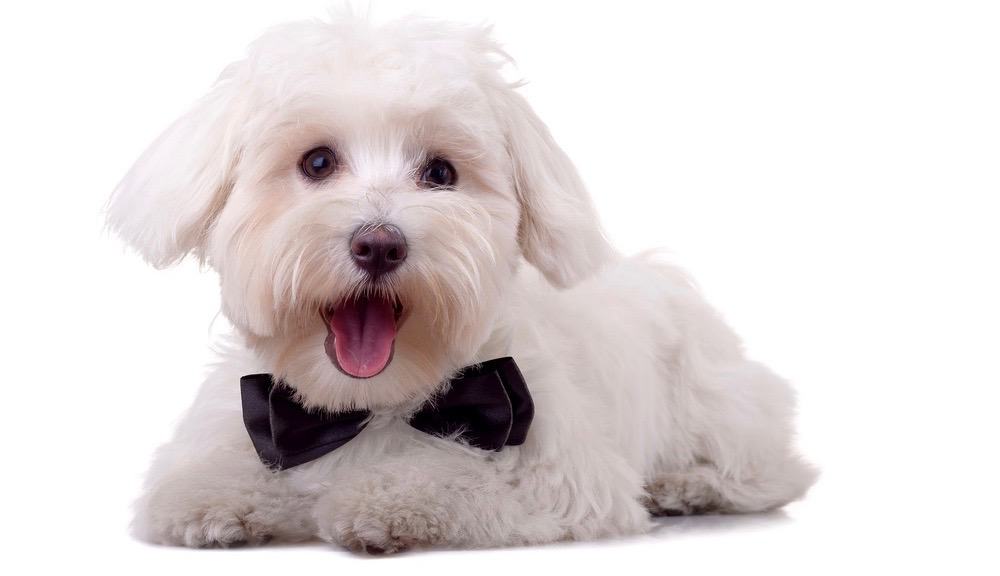
If this happens to your dog because of happy tail syndrome be sure to keep his tail properly covered in a bandage.
You should also try to have large accommodations for your dog so that his tail does not hit any objects and cause further injury exit.
Some owners prefer to go the tail docking route however research has shown that tail docking may lead to increased sensitivity to pain in your dog.
Can Illness Or Injury Affect My Dog’s Tail?
Sometimes your dog’s tail position can point to a serious health condition that they may be facing.
For instance, if your dog has a tail that stays down for a long period of time they may also have an issue that you should be aware of.
You may notice your dog exhibiting symptoms such as vomiting, nausea, lethargy, or issues with mobility. If this happens, you must take your dog to the veterinarian as soon as possible
Your dog could also have a tail that is injured or suffering from a disease in silence. Remember that your dog cannot tell you if they feel sick or if something is wrong with them.
The tail can be damaged or broken like other body organs. There could also be fractures or nerve damage that affects the spine move the entire body for that matter.
You may notice your dog is not acting the way he usually does if his tail is damaged. Have a veterinarian diagnose the problem.
Final Words
We should not operate under the false assumption that whenever a dog wags his tail it means that he is happy or friendly to us.
Dogs use that to you to communicate but not every time they wag their tail if it means play want to be your friend.
A dog’s tail conveys emotions, but sometimes the position of his tail is particular to his breed.
This is why we cannot place too much weight on the position, and its meaning. For example, greyhounds usually keep their tails between their legs, while pugs normally have tails that curl upward.
Dogs rely on their tail and their entire body to communicate. Understanding the position of their tail well goes a long way to help you find out what they need at any given time.

